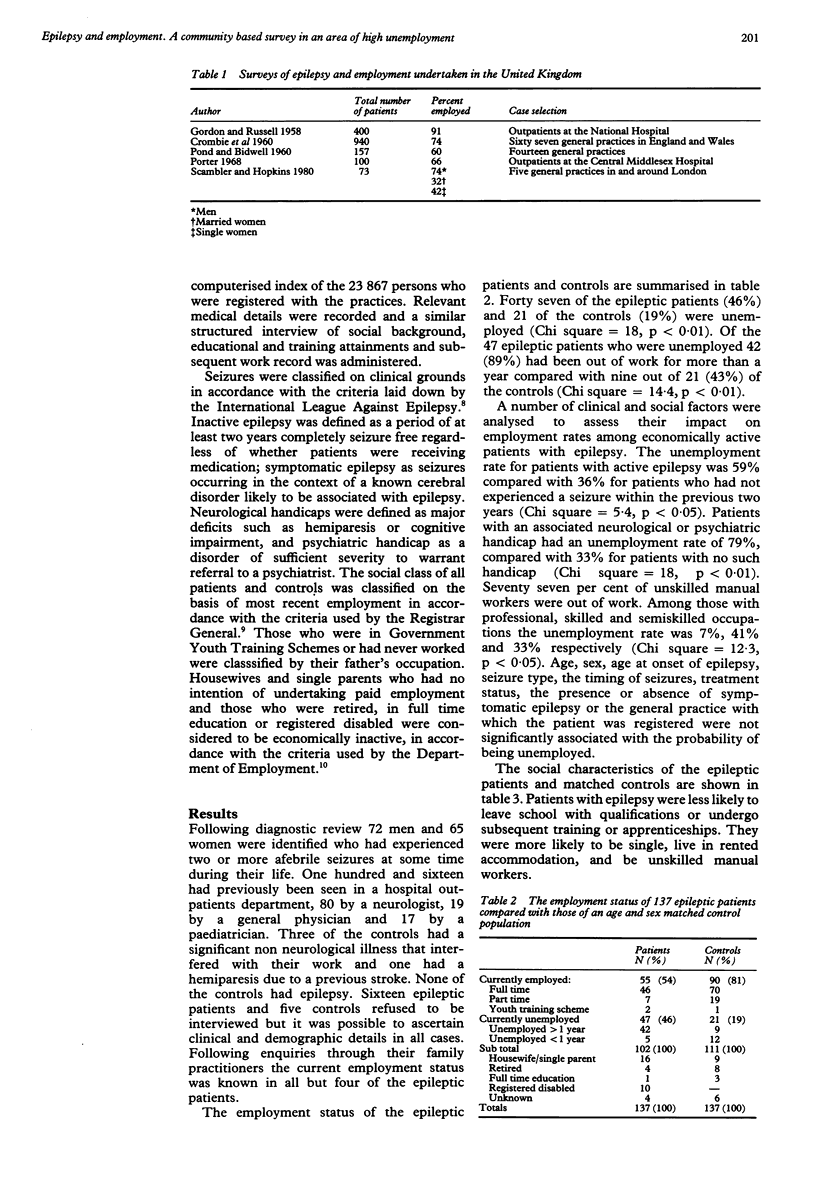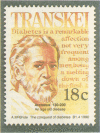Abstract
A community based survey was undertaken to assess the work record of patients with epilepsy in an area of high unemployment. One hundred and thirty seven epileptic patients were identified from a population of 23,837 persons of employable age registered with three urban group practices in North East England. The unemployment rate for economically active patients with epilepsy was 46% compared with 19% for an age and sex matched control population (p less than 0.01). Fifty nine per cent of patients with active epilepsy were unemployed. In those with an associated neurological or psychiatric handicap and those who were unskilled manual workers the unemployment rates were 79% and 77%, respectively. Patients with epilepsy were less likely to leave school with qualifications or undergo subsequent training or apprenticeships. They were more likely to be unskilled manual workers, single and living in rented accommodation. In an area of high unemployment patients with epilepsy have disproportionately greater difficulty finding work. High unemployment rates among patients with epilepsy are only one aspect of a spectrum of social and economic disadvantage.
Full text
PDF



Images in this article
Selected References
These references are in PubMed. This may not be the complete list of references from this article.
- A SURVEY of the epilepsies in general practice. A report by the Research Committee of the College of General Practitioners. Br Med J. 1960 Aug 6;2(5196):416–422. [PMC free article] [PubMed] [Google Scholar]
- Dasgupta A. K., Saunders M., Dick D. J. Epilepsy in the British Steel Corporation: an evaluation of sickness, accident, and work records. Br J Ind Med. 1982 May;39(2):145–148. doi: 10.1136/oem.39.2.145. [DOI] [PMC free article] [PubMed] [Google Scholar]
- GORDON N., RUSSELL S. The problem of unemployment among epileptics. J Ment Sci. 1958 Jan;104(434):103–114. doi: 10.1192/bjp.104.434.103. [DOI] [PubMed] [Google Scholar]
- LIONE J. G. Convulsive disorders in a working population. J Occup Med. 1961 Aug;3:369–373. [PubMed] [Google Scholar]
- MacIntyre I. Epilepsy and employment. Community Health (Bristol) 1976 Apr;7(4):195–204. [PubMed] [Google Scholar]
- POND D. A., BIDWELL B. H. A survey of epilepsy in fourteen general practices. II. Social and psychological aspects. Epilepsia. 1960 Apr;1:285–299. doi: 10.1111/j.1528-1157.1959.tb04266.x. [DOI] [PubMed] [Google Scholar]
- Porter R. J. Epilepsy and employment. Ir J Med Sci. 1968 Feb;7(2):83–90. doi: 10.1007/BF02946442. [DOI] [PubMed] [Google Scholar]
- Sander J. W., Shorvon S. D. Incidence and prevalence studies in epilepsy and their methodological problems: a review. J Neurol Neurosurg Psychiatry. 1987 Jul;50(7):829–839. doi: 10.1136/jnnp.50.7.829. [DOI] [PMC free article] [PubMed] [Google Scholar]
- Scambler G., Hopkins A. Social class, epileptic activity, and disadvantage at work. J Epidemiol Community Health. 1980 Jun;34(2):129–133. doi: 10.1136/jech.34.2.129. [DOI] [PMC free article] [PubMed] [Google Scholar]



